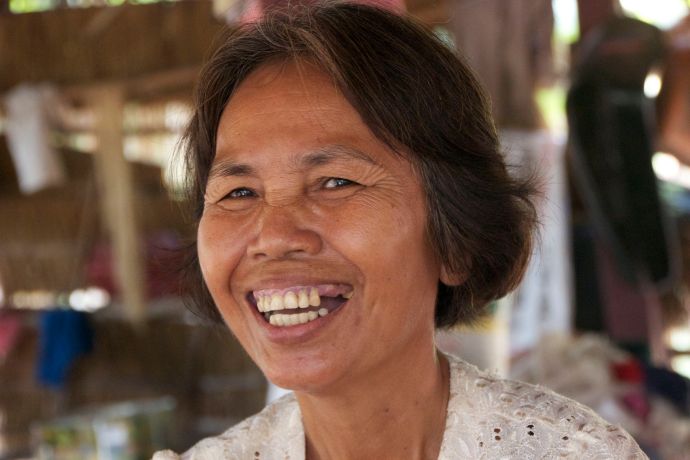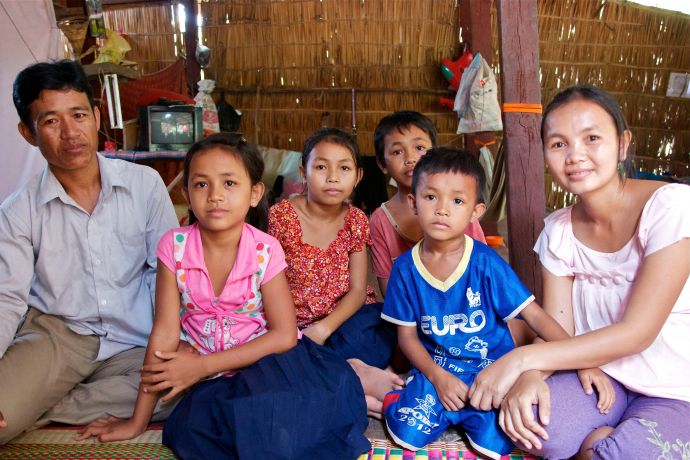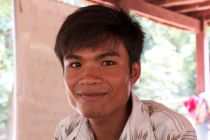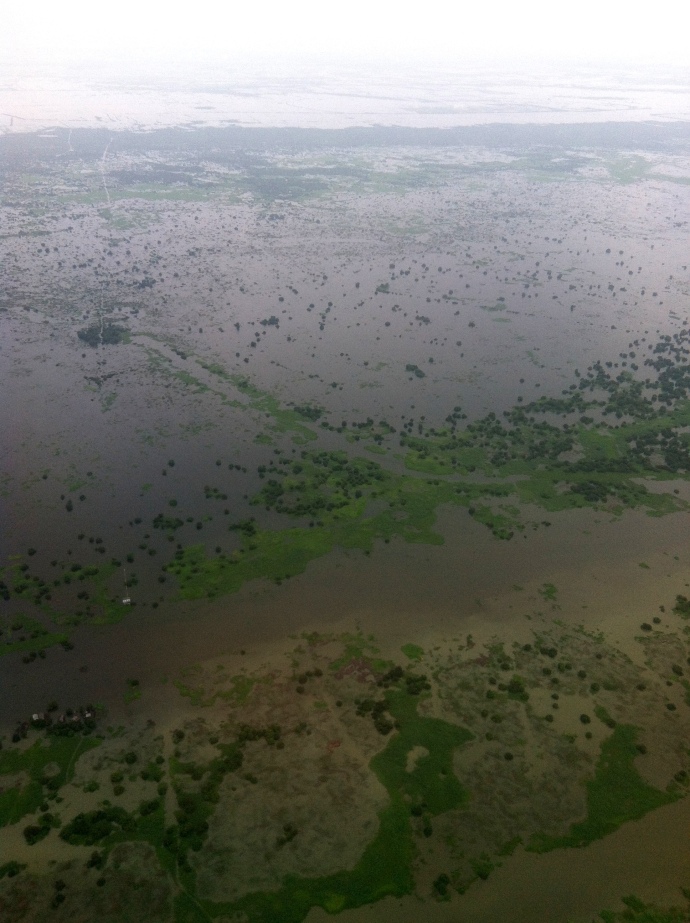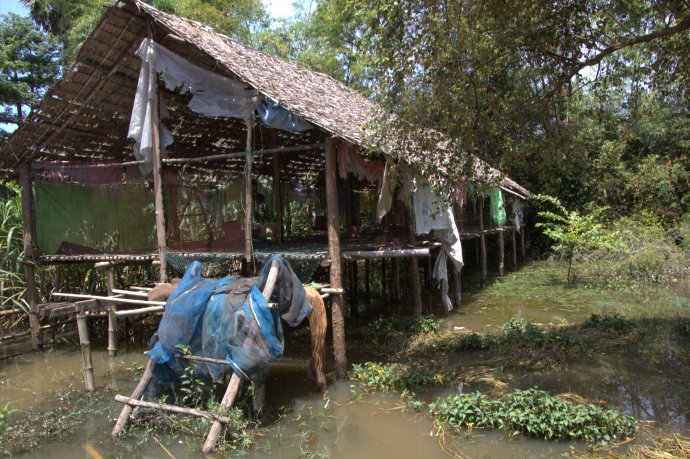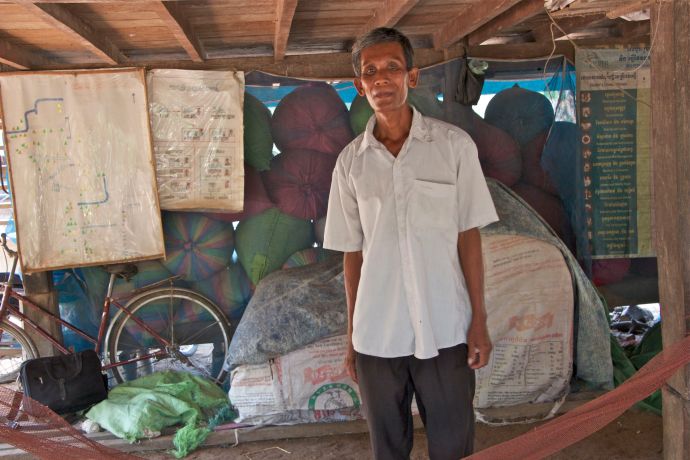In 1976, Pream Sui was 19 years old, living in Anlong Sar, Cambodia under the Khmer Rouge. Because she was one of the “old people” –uneducated rural villagers who weren’t a threat—she wasn’t killed but placed in a youth group working in the fields. One of the guards noticed her, decided he wanted her for his own, and married her.
The “wedding” took place at the end of a workday with 12 other couples composed of guards and the village girls they’d chosen. The girls had no idea whom they were marrying but dared not refuse their captors. The ceremony lasted less than 5 minutes.
After her marriage, Sui continued to work in the fields, under the gun of her husband, but like all the other “wives,” she went to his cabin at night. In short order, she had 2 children but when Vietnam invaded Cambodia to drive out Pol Pot, her husband disappeared into the resistance and moved away. He came back a few times to visit Sui and the children, but by then he had another wife and when Sui got pregnant with her third baby, he left for good.
To be a woman in Cambodia in the countryside raising three children alone was shameful and indescribably hard. “It’s difficult to tell you how I felt because I cried every day,” Sui says with an incongruous big smile. Somehow, she managed to farm her 3 hectares of land, raise her three children, marry off two daughters (and pay for the weddings) and is now a happy grandmother living with her eldest daughter, Chen Soueb.
Soueb, 30, has four children—12, 11, 10 and 7 –and a story of abandonment of her own. About 4 years ago, her husband Heng Ha began illegally immigrating to nearby Thailand, like 75% of all the men in Anlong Sar village, Banteay Meanchey province. Disastrous floods had ruined the rice crop and drowned most of the animals, and the village men were desperate for an income. Ha decided to risk illegally going over the border to earn money working construction.
It takes 1 ½ days to make the trip into Thailand from Banteay, working through an underground network to avoid capture and getting thrown into a detention center. Once in Thailand, Ha had no way to contact his family and could only send money home through a money train that skimmed off 25%. Ha made his way home just twice a year, and every trip was laden with the risk of being thrown in jail. Soueb gave birth to her fourth child while Ha was in Thailand, and she feared that he would never come home – much like her own dad.
So when Soeub encountered Heifer’s “Community Empowerment Program” in her village – and attended the Family Focus cornerstone training with Ha– the couple figured that if they worked very hard at home, maybe they could make it together as a family.
 For two years now, Ha has stayed home with the family and they’ve managed to make the same amount of money as when he worked in Thailand. Despite the devastating floods of last year, the 2 pigs they received from Heifer in 2011 have reproduced and provided them with income. They attended all Heifer’s animal husbandry courses and are also raising ducks and chickens, growing rice and grasses for income and feed, eating from their home garden, and most importantly, staying together.
For two years now, Ha has stayed home with the family and they’ve managed to make the same amount of money as when he worked in Thailand. Despite the devastating floods of last year, the 2 pigs they received from Heifer in 2011 have reproduced and provided them with income. They attended all Heifer’s animal husbandry courses and are also raising ducks and chickens, growing rice and grasses for income and feed, eating from their home garden, and most importantly, staying together.
Heifer’s impact in the whole village of Anlong Sar has been profound: increasing the number of home latrines from 10% to over 90%; boosting family income by 30%; improving food security with animals and home gardens; decreasing the incidence of malaria by 80%; and building solidarity among these women who are so warm and affectionate, they competed to hold my hand the entire time I was there (how much did I love that??)

Women from one of the four Self-Help Groups in Anlong Sar village with KK, Heifer’s country director.
I saw more evidence of the strength of the community when we met Eath Korm, a disabled 21-year old who loved school but was denied entrance past middle school because his parents couldn’t manage the transportation (Korm can’t walk). However, a member of Anlong Sar’s Self-Help Group knew of Korm’s desire to teach and encouraged him to set up a tutorial service – and with the help of Heifer’s curriculum guides, literacy packets and Teaching Technology courses (the town has no books for the children to read, so they practice with the literacy handbooks), Korm is now tutoring an after-school class of 20 enthusiastic kids.
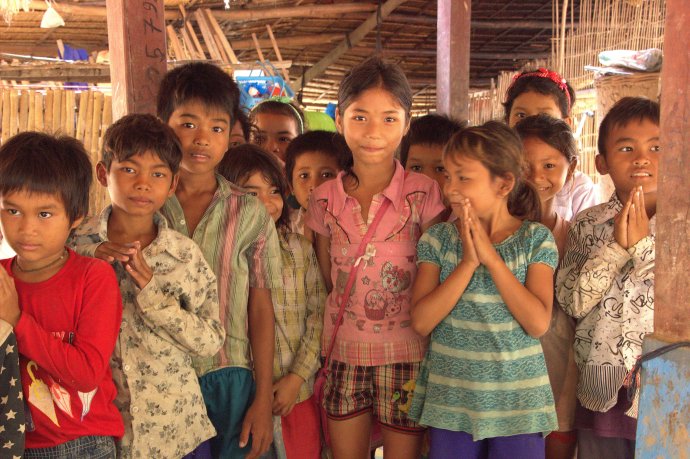 It’s a tiny village, Anlong Sar. There’s a long way to go before there is real literacy or decent education here, and the government hasn’t made much headway in meeting its responsibilities to these poor provinces. And yet … when you see darling Soueb and her family, or Korm on crutches before his eager students in the classroom, it’s hard not to see this as a leap forward in hope.
It’s a tiny village, Anlong Sar. There’s a long way to go before there is real literacy or decent education here, and the government hasn’t made much headway in meeting its responsibilities to these poor provinces. And yet … when you see darling Soueb and her family, or Korm on crutches before his eager students in the classroom, it’s hard not to see this as a leap forward in hope.
I’m feeling it. Are you?


